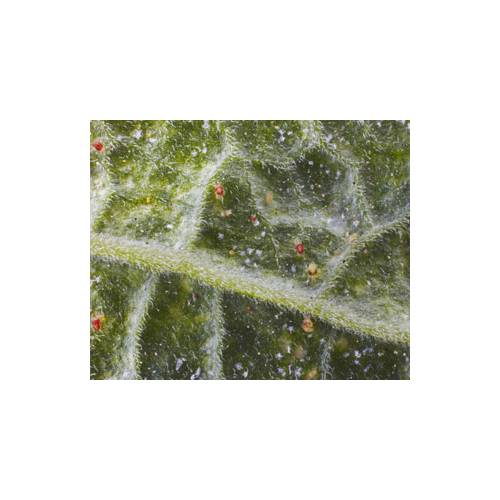
Parasites and insects
The red spider mite
- Details
-
It is not really a spider but actually a very small mite, that is particularly voracious and annoying, especially for houseplants. Its exact name is Tetranychus urticae.
The symptoms
The red spider mite is so small that its presence often goes unnoticed. It is only by remarking the change in the appearance of the leaves that one suspects its harmful presence. The attacked leaves take on a greyish tinge. If you look through a magnifying glass, you will see lots of tiny discolourations over the leaf. There appears a sort of dust on the surface, stretched like a blanket over the leaf. With experience, the discolouration of the leaf due to the presence of the red spider mite will be spotted at first glance.
Lifecycle
The red spider mite is present on many plants both in the garden and indoors. There is always an individual specimen hidden somewhere just waiting for the right moment. It is only when the conditions are favourable that the beasts will multiply in great numbers. The adults and the larvae (which resemble the adults) will develop on the surface of the leaf that they are biting away at. Warm temperatures accelerate the development of the Tetranychus urticae, whilst humid air is not favourable.
How to fight it
If the plant has flat leaves it is easy to wipe them down using a sponge soaked in soapy water, this will remove the red spider mites. If it is a serious infestation (a large number of the plants have a greyish colour), it will be necessary to spray the plant’s leaves with an insecticide. Afterwards the plant must be kept in a humid atmosphere to stop the Tetranychus urticae from developing again.
How to avoid it
The red spider mite benefits from dry air and warm temperatures. It is the reason that their damage is often seen in sheltered locations (greenhouses, poly-tunnels, cold frames...) and inside. Spraying regularly with water at room temperature slows their development and keeps the plants in good health. Be careful though as warm air and humidity increase the chance of fungal attack on the leaves. Sometimes you will have to choose between leaf diseases and the red spider mite, the latter is often the more dangerous to the plant!
Information
Red spider mites can develop on plants in the garden, especially when the weather outdoors is particularly warm and dry. You will notice the leaves of susceptible plants take on the characteristic greyish colour. As humid weather, returns this infestation will disappear and the new leaves will appear on top form. - Photos (1)

